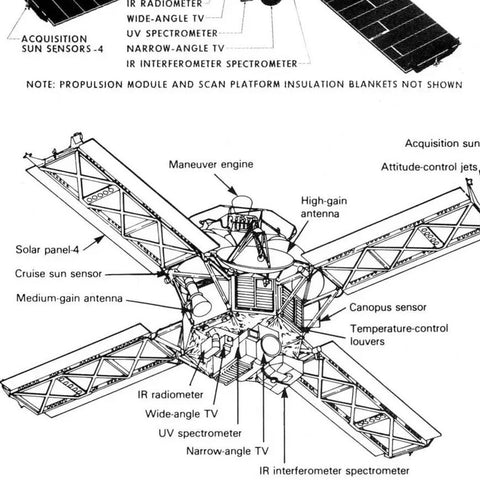In the vast cosmic tapestry, our understanding of the universe has been greatly enhanced by the development of advanced tools and technologies. Among these groundbreaking initiatives stands the Orbiting Astronomical Observatory (OAO) program, a venture that revolutionized space astronomy. Join us as we delve into the significance of the OAO program, exploring how it paved the way for transformative advancements in our exploration of the cosmos.
Unveiling the Limitations of Ground-Based Observations:
Before the advent of the OAO program, astronomical observations were primarily conducted from Earth's surface. However, the Earth's atmosphere poses limitations, distorting and blocking certain wavelengths of light. The OAO program sought to overcome these challenges by placing observatories in orbit, above the atmosphere, providing a clearer and more unobstructed view of celestial phenomena.
OAO-2: A Trailblazing Mission:
Launched in December 1968, OAO-2 was a pivotal mission in the OAO program. Equipped with a suite of scientific instruments, including ultraviolet and X-ray detectors, OAO-2 became the first space telescope designed for extensive observations beyond Earth's atmosphere. This mission not only demonstrated the feasibility of space-based astronomy but also opened new windows into the electromagnetic spectrum.
Advancements in Ultraviolet Astronomy:
One of the primary objectives of the OAO program was to explore the universe in ultraviolet wavelengths, which are absorbed by the Earth's atmosphere. OAO observatories, free from atmospheric interference, provided unprecedented observations of hot, young stars, galaxies, and other celestial objects emitting ultraviolet light. These observations expanded our understanding of stellar evolution and the dynamics of galactic structures.
OAO Program: Paving the Way for Future Space Telescopes:
The success of the OAO program laid the groundwork for subsequent space-based observatories, including the iconic Hubble Space Telescope. OAO's achievements demonstrated the potential for extended observations in space, free from atmospheric constraints. The technological advancements and lessons learned from OAO directly influenced the design and implementation of future space telescopes, shaping the landscape of modern space astronomy.
Global Collaboration and Data Sharing:
The OAO program embraced a collaborative approach, fostering international partnerships and encouraging the sharing of scientific data. By collaborating with other nations, OAO not only expanded its observational capabilities but also laid the foundation for a global community of astronomers working together to unlock the mysteries of the universe. This collaborative ethos has become a hallmark of space exploration endeavors.
The OAO program stands as a transformative chapter in the history of space astronomy. By elevating observatories beyond the Earth's atmosphere, OAO revolutionized our ability to observe and study celestial objects across the electromagnetic spectrum. Its impact resonates in the continued success of space-based telescopes, contributing to our evolving comprehension of the cosmos. As we celebrate the significance of the OAO program, we recognize its enduring legacy in shaping the way we explore and understand the vast reaches of space.






